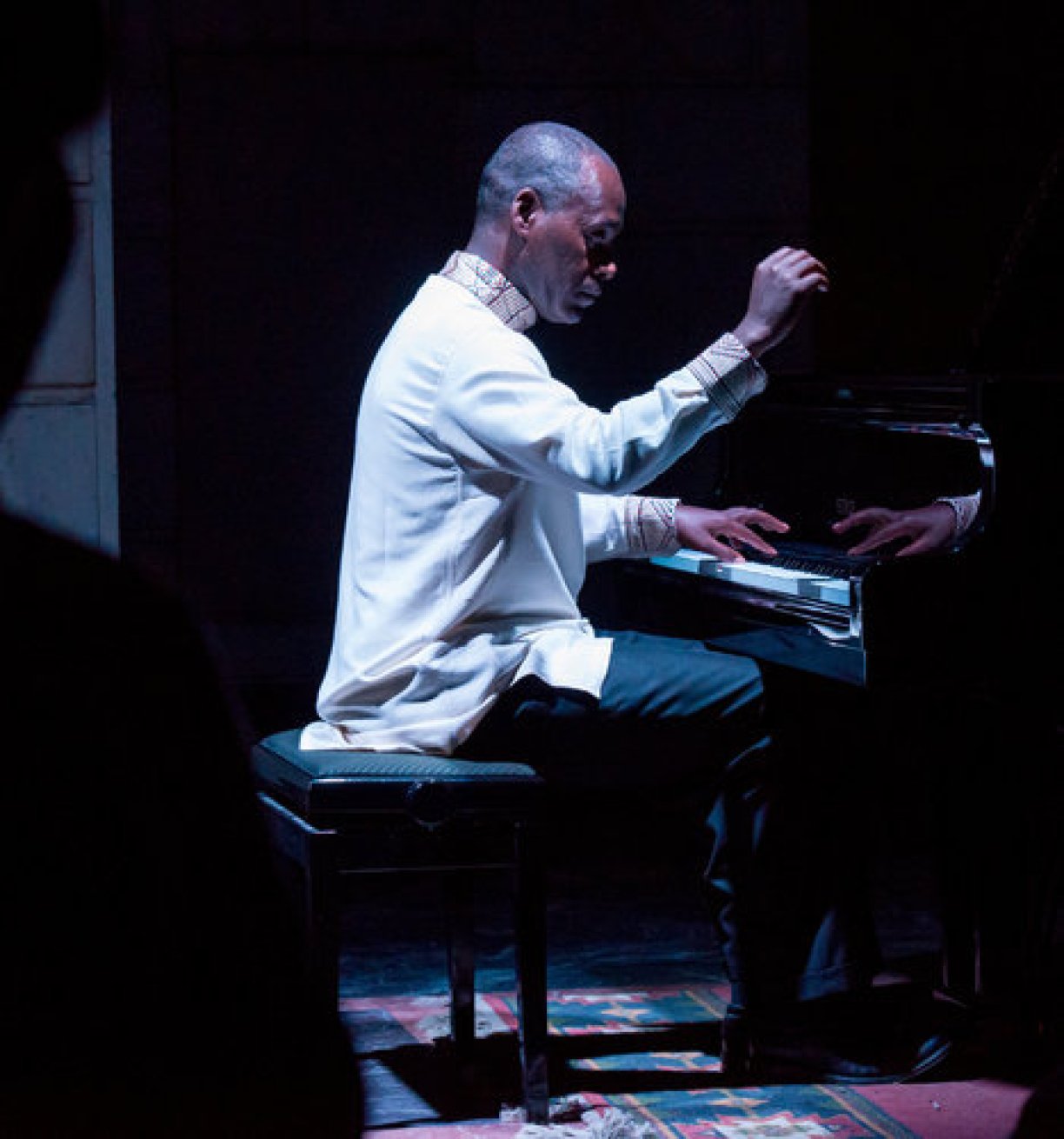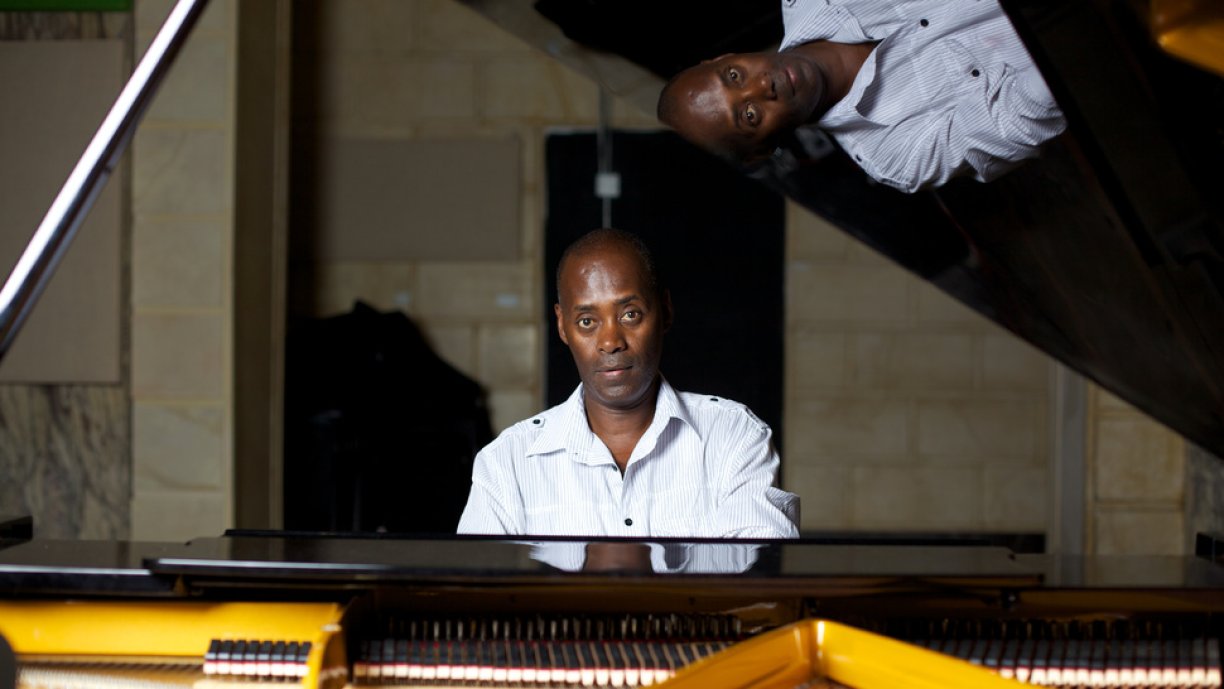From Chopin to Ethiopia, and Partway Back Again
Steve Smith in The New York Times
“Classical music is music without Africa,” Brian Eno bluntly declared in a 1995 interview published in Wired magazine. “It represents old-fashioned hierarchical structures, ranking, all the levels of control,” he said. An art-rock provocateur, Mr. Eno managed to patronize two cultures in a single blow, fetishizing a free-floating independence in African art that he found lacking in rigid European traditions.
Yet if Mr. Eno’s statement oversimplified a complicated global exchange, relatively little evidence indicates that the Western classical tradition has held as much sway in Africa as it has in other parts of the globe, from Venezuela to China. So Girma Yifrashewa, a 45-year-old Ethiopian pianist and composer who performed at the Issue Project Room in Downtown Brooklyn on Saturday night, offers a rare and fascinating example of aesthetic adaptation and convergence.
Precious little information is available in English about Mr. Yifrashewa’s life and work, apart from his Web site and a succinct biography included in the program distributed at the concert. Initially trained on the kirar, an Ethiopian harp, he discovered the piano while in music school in Addis Ababa and pursued formal studies at the Sofia State Conservatory of Music in Bulgaria.
Since returning to Ethiopia in 1995, Mr. Yifrashewa has promoted awareness there of the standard classical repertory, while also writing new pieces that apply European techniques to Ethiopian musical and folkloric sources. His recital here, one of two American concerts mounted with support from the independent record label Unseen Worlds, was split between canonical works and original music.
Given his European education, Mr. Yifrashewa’s expertise in the standard repertory came as no surprise. Performing from memory for a rapt audience, he brought bluesy languor and a crisp elasticity to Gershwin’s Prelude No. 2; Schumann’s Arabesque (Op. 18) rippled and tumbled agreeably; Debussy’s “Clair de Lune” was suitably dreamy.
Opening a group of Chopin works, Mr. Yifrashewa was airy and unfussy in the Waltz in C-sharp minor (Op. 64, No. 2). He balanced sweetness and obsessive tension in the “Raindrop” Prelude (Op. 28, No. 15) and closed with a sensibly paced, handsomely characterized Fantaisie Impromptu (Op. 66).
When Mr. Yifrashewa played his own works during the second half, you heard echoes of what had come before. Debussy (and Ravel) resounded in “The Shepherd With the Flute,” a white-keys reverie based on a popular folk song. Chopin’s monotone patter and filigree detailing recurred in “Ambassel,” inspired by an Ethiopian mountain.
“Chewata,” meant to evoke an Ethiopian custom of making merry even at times of sadness, had the spirited roll of gospel music. That sensation became even more emphatic in “Sememen,” a rumbling, surging work employing a traditional mode associated with the Ethiopian Orthodox Church. Mr. Yifrashewa ended his program with “Elilta,” named for the cheery ululation with which Ethiopians greet joyful occasions and filled with tingling trills that imitated that sound.
You could imagine that none of the stylistic revolutions of the 20th century had ever happened — no Schoenberg, no Cage, no Minimalism — while still admiring the way Mr. Yifrashewa turned an adopted tradition to distinctly personal ends. Warm applause — and, yes, joyful ululations — brought him back for an encore, Scott Joplin’s “Maple Leaf Rag.”
A version of this review appeared in print on June 10, 2013, on page C5 of the New York edition with the headline: From Chopin to Ethiopia, and Partway Back Again.
http://www.nytimes.com/2013/06/10/arts/music/girma-yifrashewa-pianist-c…


